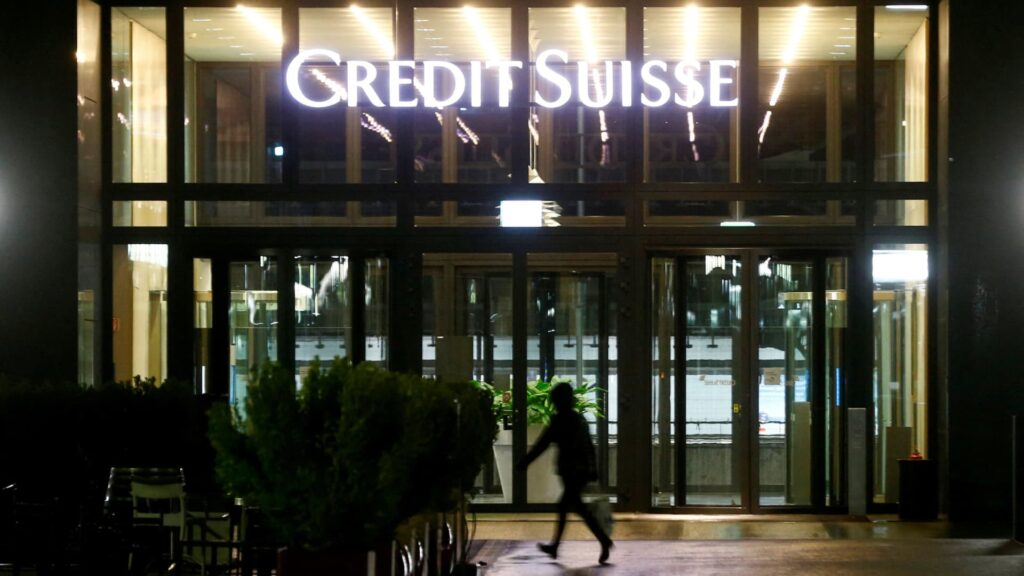The logo of Swiss bank Credit Suisse is seen at an office building in Zurich, Switzerland February 21, 2022.
Arnd Wiegmann | Reuters
Credit Suisse received a liquidity lifeline from the Swiss National Bank after its share price plunged to an all-time low, but the embattled lender’s path to the brink has been a long and tumultuous one.
The announcement that the bank would access a loan of up to 50 billion Swiss francs ($54 billion) from the central bank came after consecutive sessions of steep losses, and made Credit Suisse the first major bank to receive such an intervention since the 2008 Global Financial Crisis.
Wednesday’s close at 1.697 Swiss francs per share was down almost 98% from the stock’s all-time high in April 2007, while credit default swaps — which insure bondholders against a company defaulting — soared to new record highs this week.
The troubled bank’s stock has been in persistent decline since the crisis, against the backdrop of investment banking underperformance and a litany of scandals and risk management failures.
Scandals
Credit Suisse is currently undergoing a massive strategic overhaul in a bid to address these chronic issues. Current CEO and Credit Suisse veteran Ulrich Koerner took over from Thomas Gottstein in July, as poor investment bank performance and mounting litigation provisions continued to hammer earnings.
Gottstein took the reins in early 2020 following the resignation of predecessor Tidjane Thiam in the wake of a bizarre spying scandal, in which UBS-bound former wealth management boss Iqbal Khan was tailed by private contractors allegedly at the direction of former COO Pierre-Olivier Bouee. The saga also saw the suicide of a private investigator and the resignations of a slew of executives.
The former head of Credit Suisse’s flagship domestic bank widely perceived as a steady hand, Gottstein sought to lay to rest an era plagued by scandal. That mission was short-lived.
In early 2021, he found himself dealing with the fallout from…
Read the full article here





